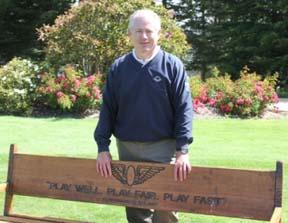As the host superintendent of the 2012 U.S. Open, the past year has been a whirlwind for Pat Finlen, CGCS. As the next president of the GCSAA, the next 12 months could be just as hectic.
Among the items high on Finlen's priority list after he officially is named president in February at the Golf Industry Show in San Diego is the continuation of outreach to chapters by filling the last two field staff positions and advocating on behalf of the golf industry to seek new revenue streams while keeping a close eye on expenses.
 The financial crunch of the past five years has hit many entities hard, and the GCSAA is no exception.
The financial crunch of the past five years has hit many entities hard, and the GCSAA is no exception.
Since 2008, association revenue has dropped from $21 million to $15 million, and its paid staff has gone from 125 to 87.
Increasing revenue, Finlen hopes, will mean increasing membership. And that will require the GCSAA to crack a market penetration rate that has historically hovered around 52-54 percent.
"That's always been a challenge," Finlen said. "It's always been a challenge to move that."
Part of that effort includes increasing its number of field staff representatives to nine in 2013 by filling two open positions in the Mid-Atlantic and Southeast. It also means advocating for the overall health of the game by meeting with legislators in Washington, D.C. Past efforts, such as National Golf Day, have been a way for members of the PGA of America, GCSAA and other entities to educate elected officials about economic issues specific to golf and the impact of decisions in Washington on the roughly 2 million people employed in golf.
"We advocate for all of golf, not just the GCSAA," Finlen said. "We present a unified front, and its important that all of golf is unified.
"We advocate for nonmembers too. There are issues that affect golf that come down to regional levels. There are pesticide issues, water studies. We reach out to golf courses in those areas, and we represent golf facilities everywhere, not just GCSAA members.
"We know things are going to get tougher from a regulatory standpoint. Every course is painted with the same brush. But when we carry a unified message it carries more weight."
Like many, Finlen is optimistic about the game's future. And that optimism is supported by data from Golf Datatech in November indicating that increases in rounds played late in 2012 could indicate record-high growth since the firm in Kissimmee, Fla., began tracking such information in 1999.
"I think weve hit rock bottom," Finlen said. "A lot of courses around the country had a great spring and fall."
Still, sustained growth is going to take a group effort that includes supporting efforts such as the PGA's Golf 2.0 initiative, and facilities maintaining an open mind about more forward tees to make the game easier and more enjoyable for high handicappers and unorthodox ideas such as time-saving six-hole rounds.
"We have to make it fun and encourage more people to play," he said. "It doesn't have to be 18 holes. We have to get more creative in how we package golf. Then people will come out to play."

